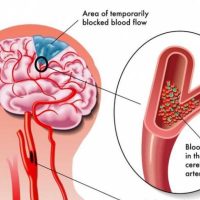
The 1966 movie, The Fantastic Voyage, starring Stephen Boyd, Raquel Welch, and Edmond O’Brien, has proven a storyline well ahead of its time. The film’s premise finds a comatose scientist with a blood clot in his brain and to save him, and here’s where the Jules Verne’s imagination of the 60’s comes into play, a crack team and their submarine-like craft is shrunk to microscopic size and injected into the man’s bloodstream for an anatomical adventure replete with peril and discovery.
The real science of using nanoparticles, however, got its start a little earlier with a lecture by theoretical physicist Richard Feynman in 1959; but because of the technical challenges of the time, it has only been the past 10 years or so that the technology has really taken off for practical medical applications.
“We are getting better and better at innovating in these areas and at a pace that continues to accelerate,” said Wyss Institute of Harvard Founding Director Don Ingber. “There is an array of advances in targeted drug delivery, self-assembling nanomaterial.”
Nanotechnology medical developments over the coming years may not just yet shrink scientists but such advances will have a wide variety of uses experts say and could potentially save a great number of lives. Nanotechnology is already moving from being used in passive structures to active ones such as more targeted drug therapies or “smart drugs.” These new drug therapies have already shown to cause fewer side effects and are more effective than traditional therapies.
Curing cancer in patients is much harder than killing it in a petri dish according to experts designing “cooperative” nanosystems for cancer diagnosis and therapy who say 99 percent of injected cancer-fighting nanoparticles fail to make it to the tumor. Here’s how cancer treatment often runs today: a patient develops an aggressive tumor; a surgeon operates to remove the tumor, but a few cancer cells remain, hiding in the body; chemotherapy is then administered, weakening both patient and cancer cells. But the cancer often does not die; it comes back to eventually kill the patient.
Now imagine another scenario: after surgery, strands of DNA anchored in tiny gold particles are injected into the affected area. The DNA strands bind to the tumor cells, killing them directly, without the help of chemo. The healthy cells around the tumor cells, which don’t express the tumor gene, are untouched. Just like that, all the tumor cell stragglers are rendered harmless, corrected on the genetic level. The patient is cured, and without having to endure months of chemotherapy and its brutal side effects: hair loss, nausea and extreme weakness.
What’s more, the future of medicine won’t focus on treating the symptoms of a disease, according to researchers: it will focus on curing it at the genetic level. “The technology to look for will deliver clot-dissolving nanotherapeutics to dissolve vascular blockages that help treat stroke, pulmonary embolisms, heart attacks, coronary artery disease, and more,” said Ingber.
While nanotechnology is still in its infancy, it’s only recently that medical scientists were able to produce powerful microscopes that allowed them to see and manipulate nanoparticles. Research requires bringing together a number of disciplines like chemistry, biomedical engineering, biology and physics. But pharmaceutical companies have already begun work on creating treatments using nanotech, and many are in various stages of development.
Source: Wall Street Journal; Medical Press; Guardian; Wyss Harvard.com











